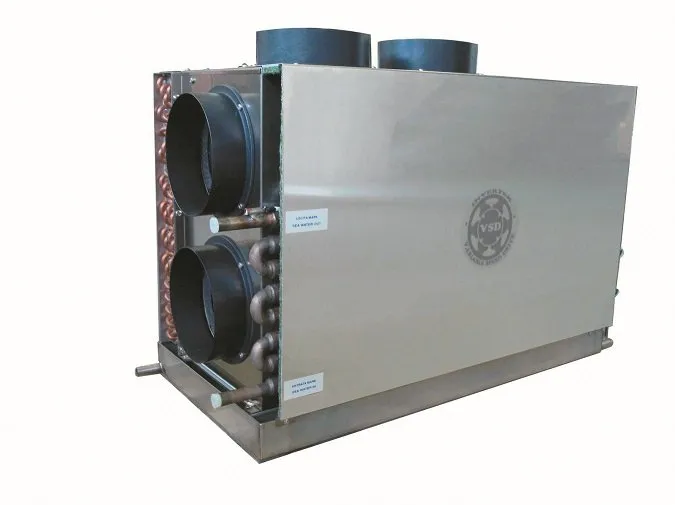In the June 2018 article Air Conditioning for Sailboats, we compared several options for 12-volt air conditioning on boats, and more recently we looked at the power requirements for running our air conditioner without being tethered to shorepower, see Air Conditioning at Anchor, PS June 2019). Since that article was published, we were told about the new i-Line VSD Series of compact air conditioners from Velair-an Italian company that is part of the Ultraflex Group.
The VSD stands for variable speed drive, which, as the name suggests, varies the speed of the compressor to manage current loads. In the case of the i-Line series, the compressor is driven by a synchronous brushless DC inverter. According to Velair this drive, combined with a low-speed reverse fan blade, a permanent magnet fan motor, and an electronic expansion valve, makes it six percent more efficiency than competitors. Most interesting to cruisers, though, is what happens at startup.
As we say in the 2019 article, reducing peak current loads every time the compressor starts up is essential to running an air conditioner on a small generator, or on battery power alone. Typically, the these peak loads are reduced with a soft start capacitor, an optional accessory designed for this purpose. The Dometic DTU 10 unit that we tested for the 2018 report was equipped with a Dometic soft-start device. There are some aftermarket soft starts such as the EasyStart, although wed not recommend this as a DIY project.
In our 2018 report, the Dometic DTU unit was the most efficient in that size (10,000 BTU) that we could find at the time. The start amperage did create a slight bump in current, but as long as you had a generator, or shorepower to back up the inverter it was connected to, this bump was nearly invisible.
According to a technical report and specifications from the manufacturer, the Velair VSD series (which we have not yet tested), can start and operate using battery power alone (via a 12-volt DC to 120V AC inverter), without the need for an onboard AC generator. Ultraflex said it was able to start and run its 10,000 BTU unit at partial load for 6 hours using two Group 29 batteries (about 180 Ah capacity, or 60 Ah usable). At full load the unit will use 450 Ah in 6 hours, but as the boat cools, you should not need to operate at full load for the full 6 hours.
We were able to achieve similar results with the Dometic system on our test boat, starting and running the Dometic DTU 10 for 4 hours on three Group 27 batteries (about 180 AH total), so we believe it is possible. A portable 120V AC unit (also Dometic) that we also used for testing, could also operate on battery power alone (via the 12-volt DC to 120V AC inverter), but it could not start using this power source setup.
The variable speed motor has many advantages. Inverters and generators can be sized for the running load rather than the starting peak. Vulnerable shore power cords arent stressed by high loads. And it should prolong battery life, as repeated peak loads can shorten the batterys life.
Another advantage of variable speed AC is longer run cycles, which helps keep humidity down. By reducing the compressor speed without turning the unit off, you have, in effect, a variable-size AC unit, cooling fast when needed, and then dehumidifying once the boat is cooled down.

Another interesting feature is the possibility of interfacing your air-conditioner with your smart phone via the Velair App. This would allow you to cool down the boat before you get to the dock-assuming you left the cooling intake seacock open (something we are reluctant to do when leaving our boat).
We havent had a chance to live with a Velair variable speed AC unit, to see how it runs and how it holds up. But we think variable speed drives and soft start technologies have a definite place in marine air conditioning.


































